
- Home
- India
- World
- Premium
- THE FEDERAL SPECIAL
- Analysis
- States
- Perspective
- Videos
- Sports
- Education
- Entertainment
- Elections
- Features
- Health
- Business
- Series
- In memoriam: Sheikh Mujibur Rahman
- Bishnoi's Men
- NEET TANGLE
- Economy Series
- Earth Day
- Kashmir’s Frozen Turbulence
- India@75
- The legend of Ramjanmabhoomi
- Liberalisation@30
- How to tame a dragon
- Celebrating biodiversity
- Farm Matters
- 50 days of solitude
- Bringing Migrants Home
- Budget 2020
- Jharkhand Votes
- The Federal Investigates
- The Federal Impact
- Vanishing Sand
- Gandhi @ 150
- Andhra Today
- Field report
- Operation Gulmarg
- Pandemic @1 Mn in India
- The Federal Year-End
- The Zero Year
- Science
- Brand studio
- Newsletter
- Elections 2024
- Events
United in rescue: How Kerala’s selfless army across divides is bringing relief to Wayanad

When Asees Kallumpuram, a blood donation volunteer from Kodungalloor in Thrissur district, heard about the Wayanad landslide disaster which struck in the wee hours of July 30, he didn’t think twice. He immediately took the vehicle from his blood donation initiative, Blood is Red, and along with a friend and fellow volunteer, started driving to Wayanad.When we met Asees on Day 8 of the...
When Asees Kallumpuram, a blood donation volunteer from Kodungalloor in Thrissur district, heard about the Wayanad landslide disaster which struck in the wee hours of July 30, he didn’t think twice. He immediately took the vehicle from his blood donation initiative, Blood is Red, and along with a friend and fellow volunteer, started driving to Wayanad.
When we met Asees on Day 8 of the tragedy at the makeshift morgue in the Meppadi Family Health Centre, he was assisting the medical team in packing the bodies and helping to identify them.
“I came here with no clue of what needed to be done. My area is blood donation and related palliative care. But when I arrived, there were more than enough volunteers for the rescue and search operations, and people were needed at the hospital. So, I took this up. These have been the most horrifying days of my life, seeing endless mutilated bodies, often just parts of them. Identifying small children was heart-wrenching. As a human, I couldn't just leave this place. I'll stay here until the last body is recovered and identified,” Asees told The Federal amid tears welling up in his eyes and his voice trembling.
Serving selflessly
Asees was not the only one; selfless volunteers from across the state have become the backbone of the search, rescue, and relief operations underway in Wayanad for the past two weeks. On Day 10 of the landslide, August 8, when The Federal was on ground zero, there were over 3,800 registered volunteers working tirelessly alongside the police, army, fire force, National Disaster Response Force (NDRF), and State Disaster Response Force (SDRF) teams. This included common workers from all political parties and religious organisations in the state, as well as various other organisations and groups such as off-roaders and biker gangs. Trained volunteers like Aapda Mitras, under the National Disaster Management Authority (NDMA), and Kerala State Disaster Management Authority (KSDMA), as well as Kerala Civil Defence volunteers under the Kerala Fire Force, were also found hard at work in the rescue and relief operations.
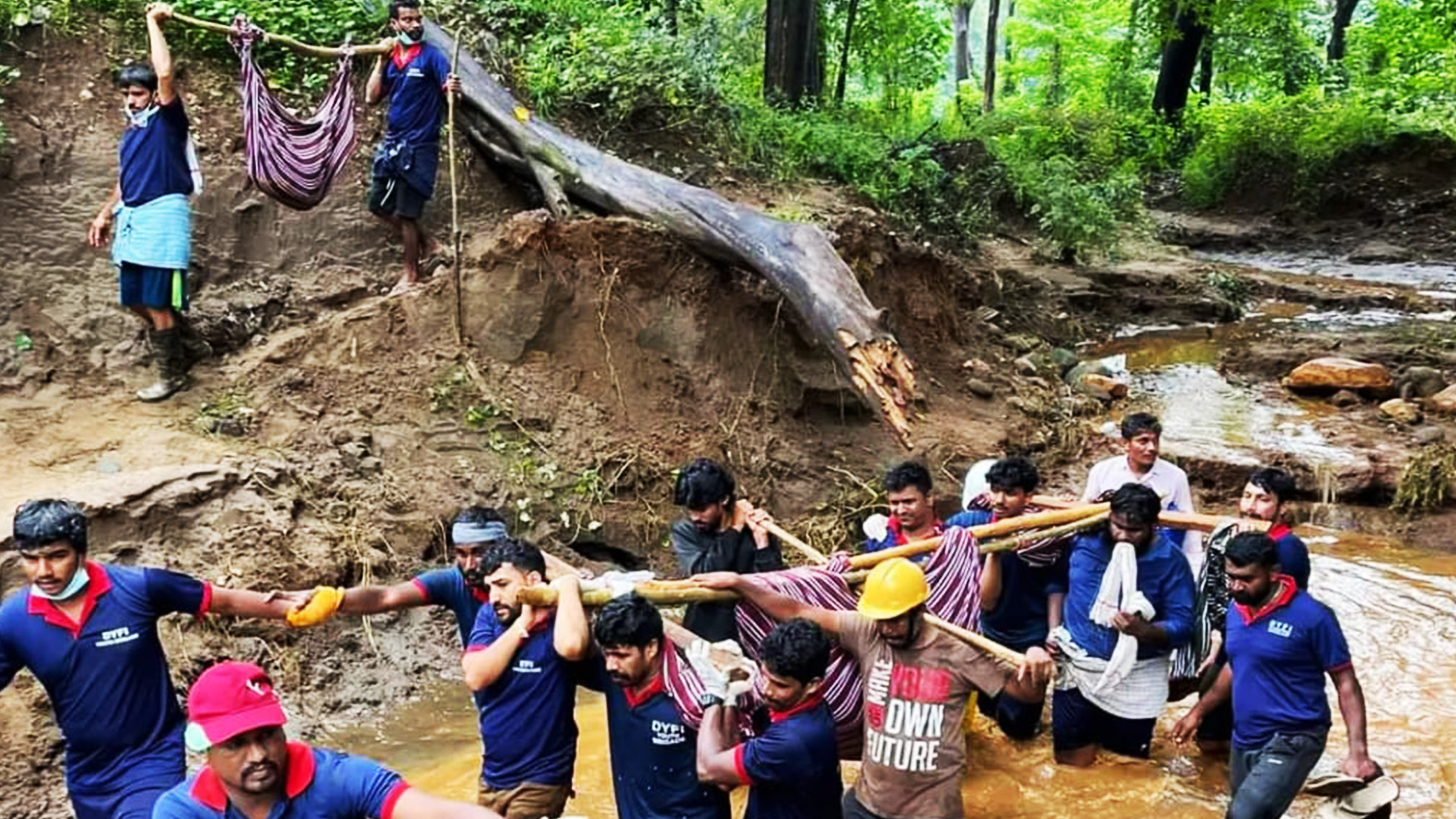
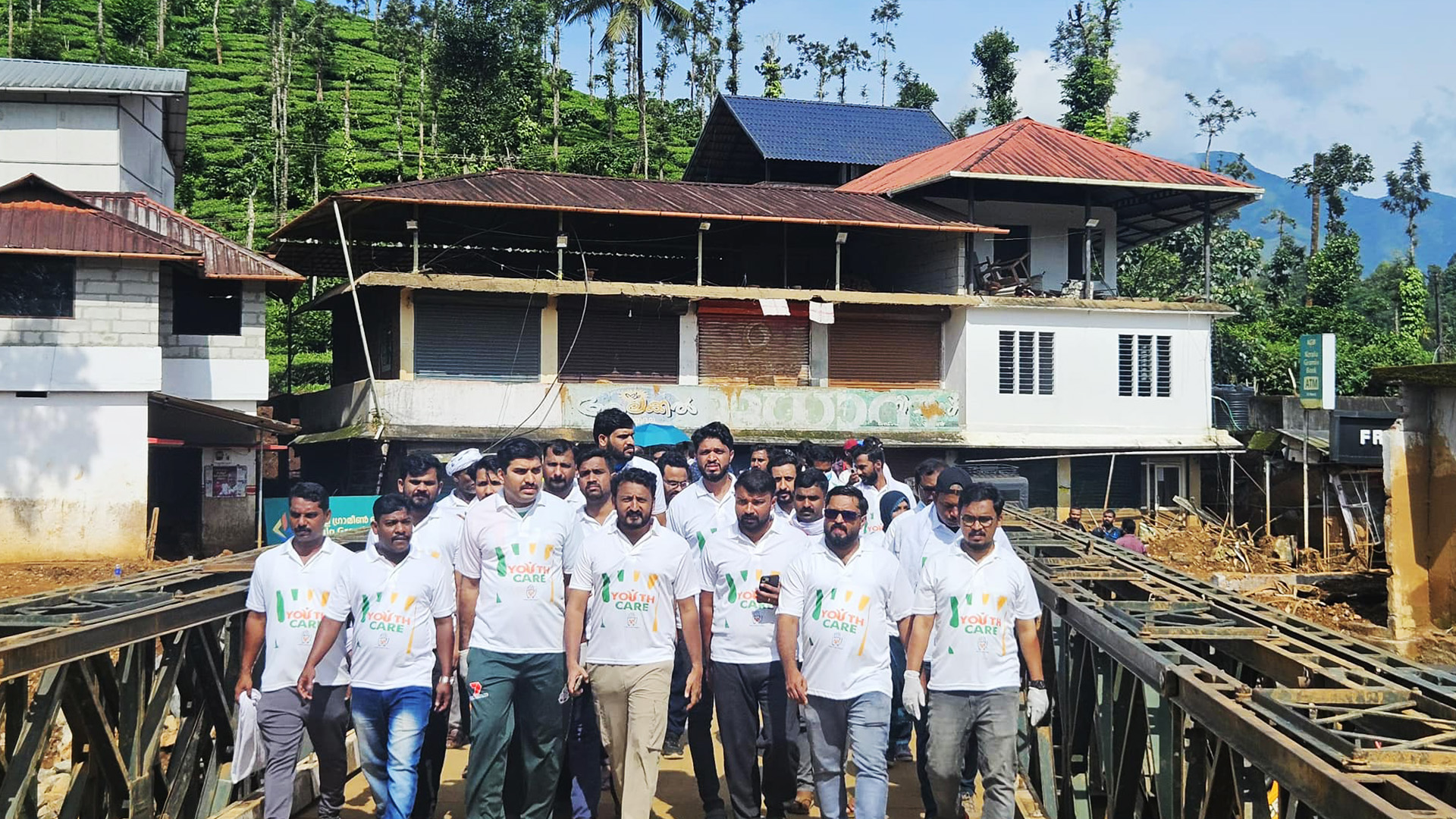
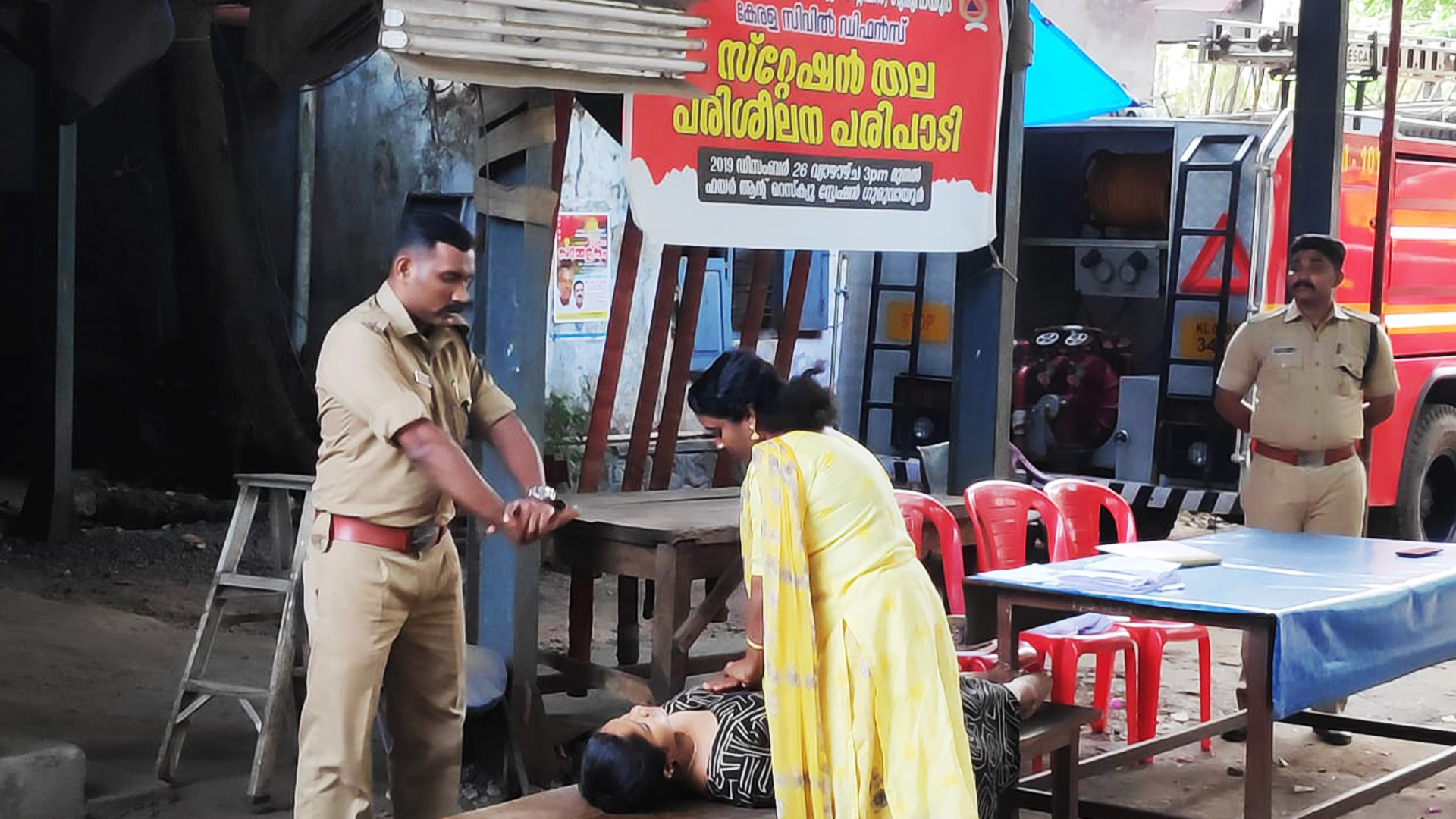
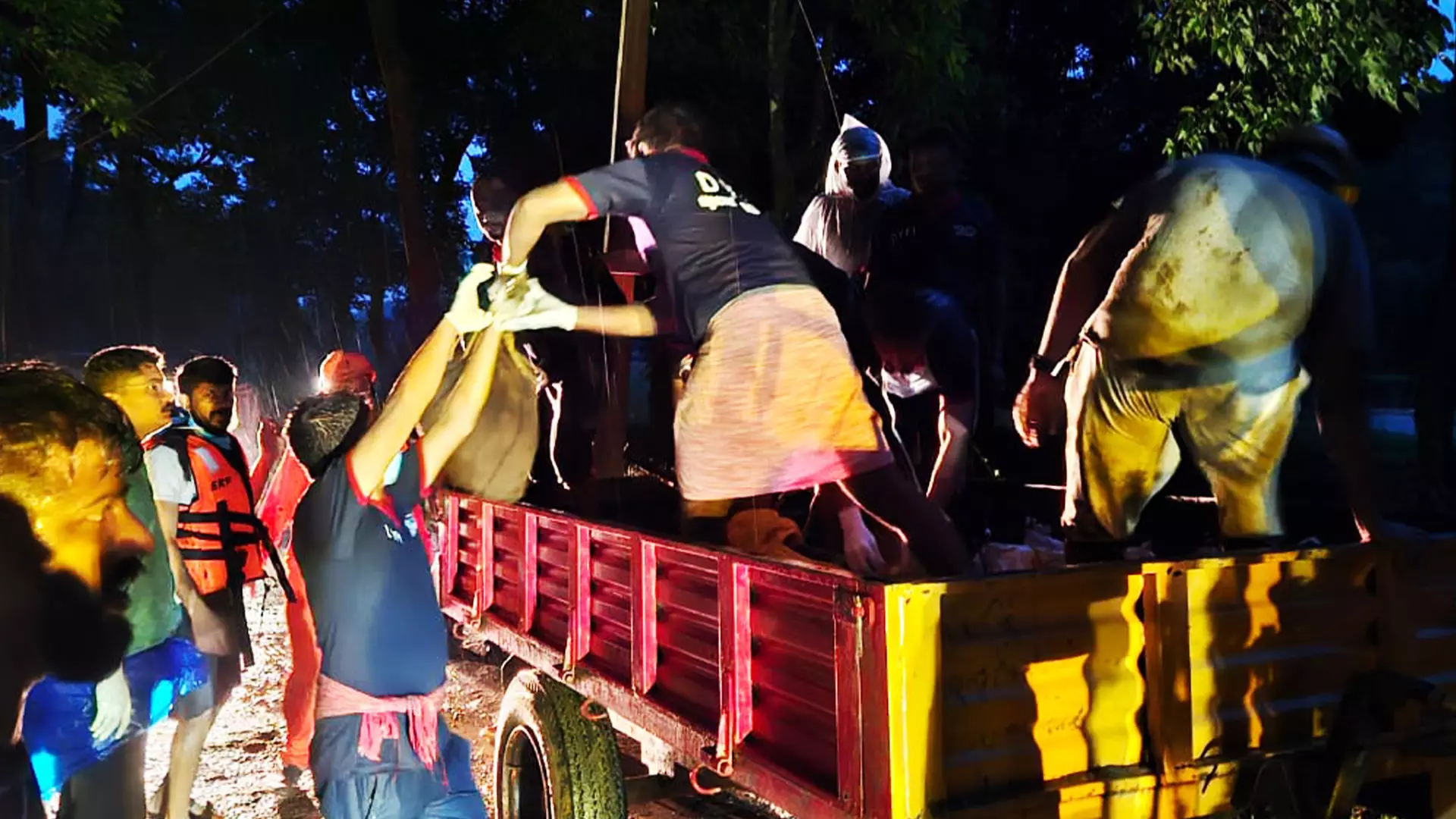
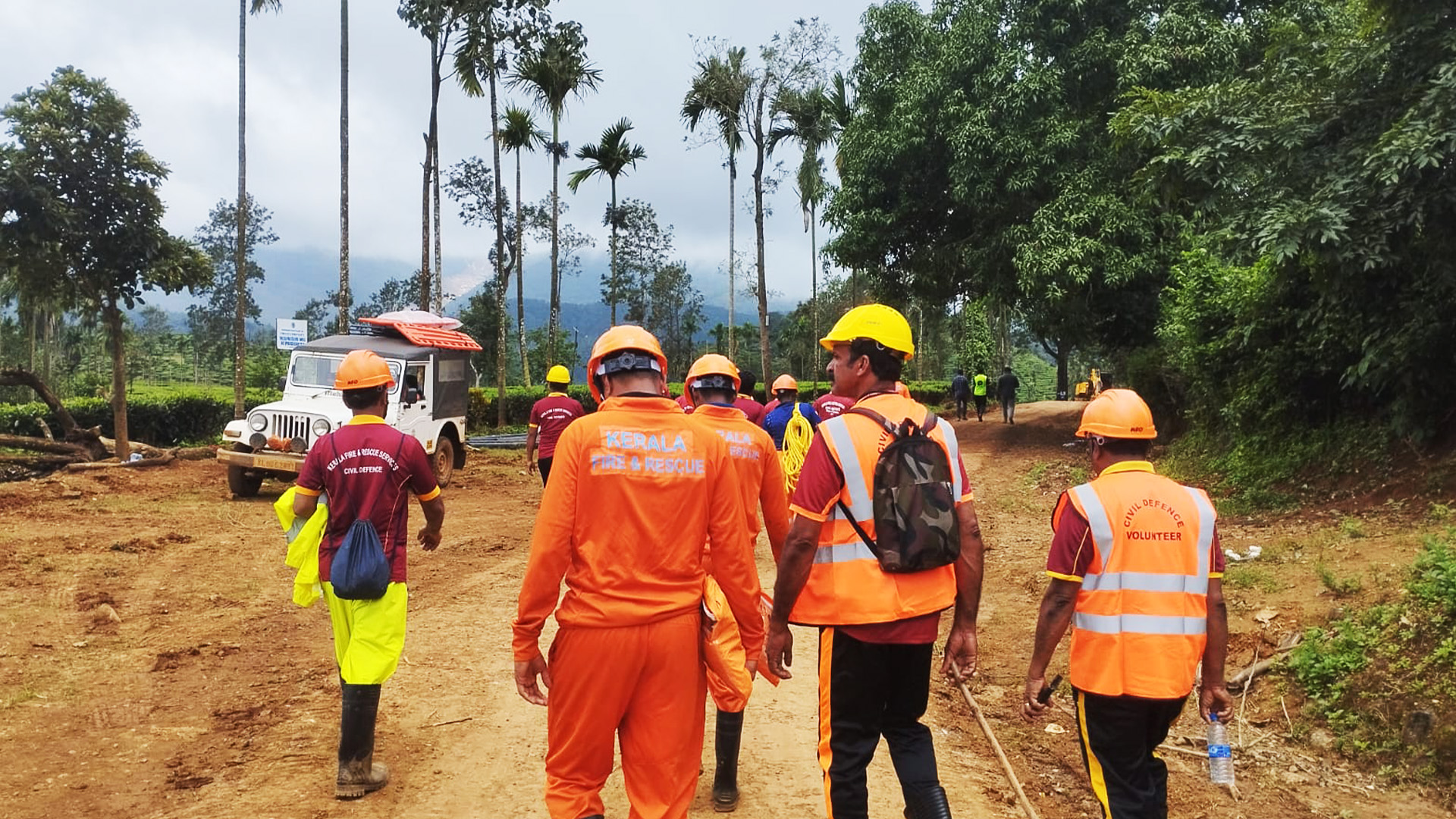
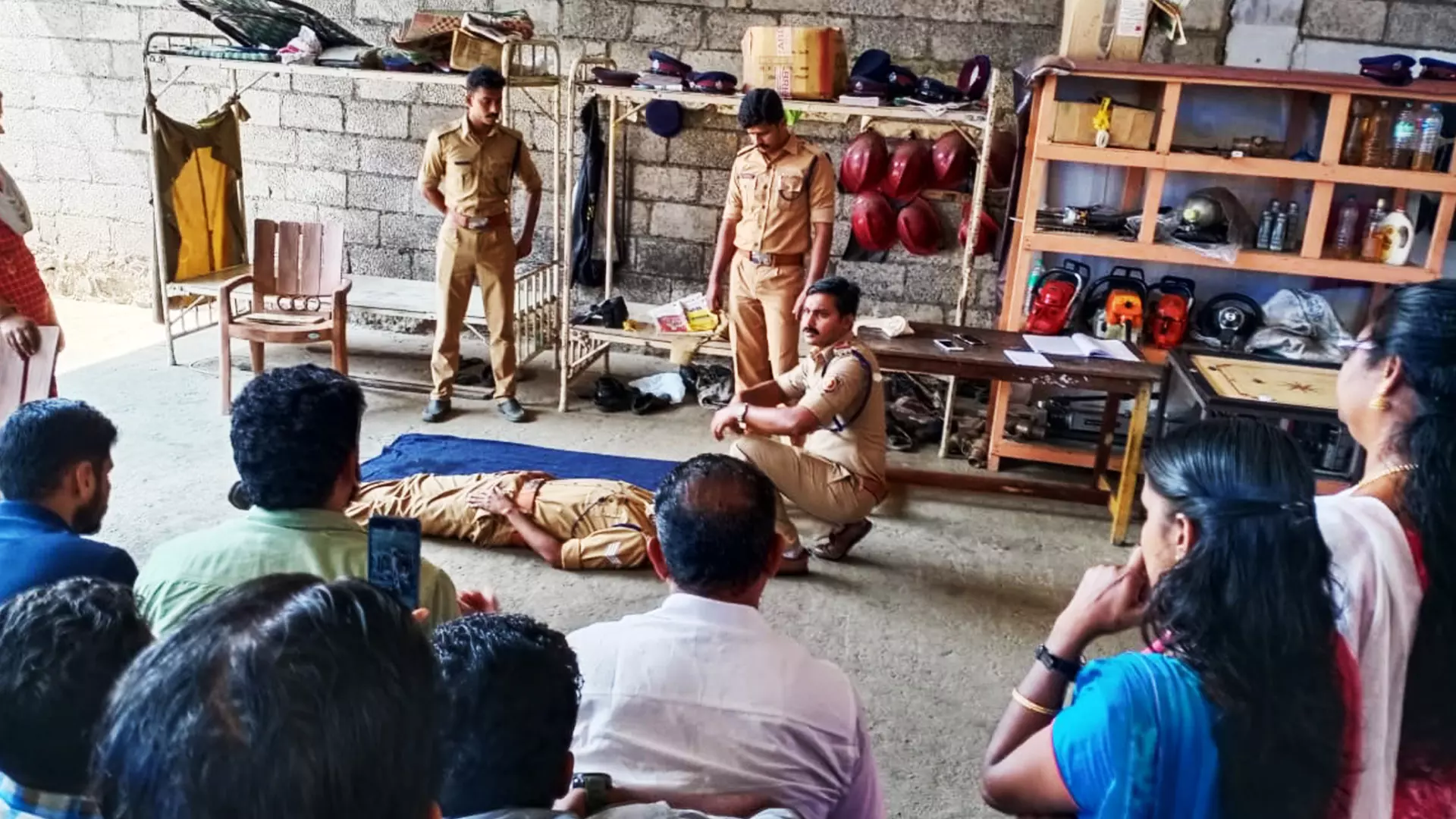

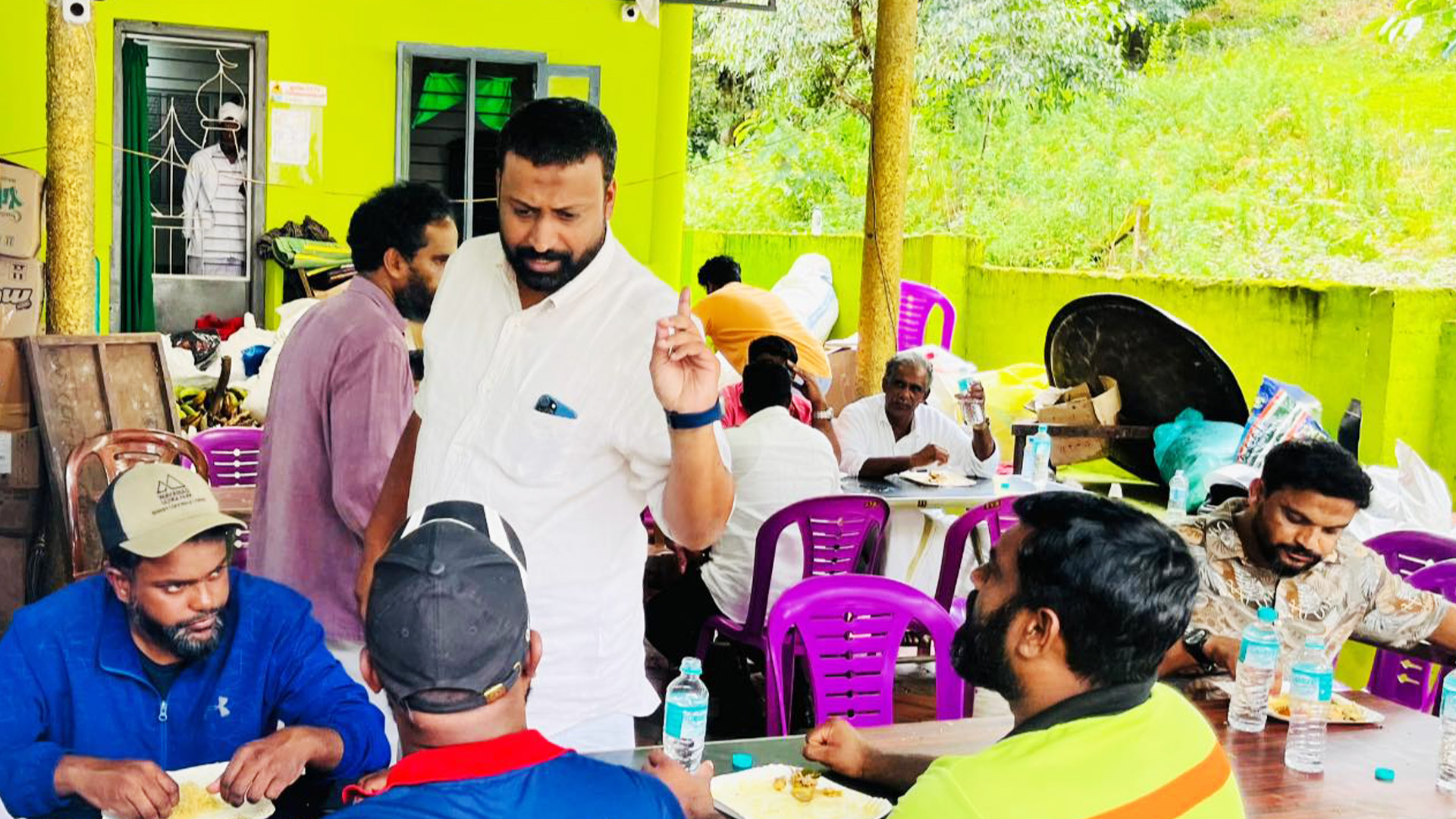
Democratic Youth Federation of India’s (DYFI) Malappuram district president, P. Shabeer, had no idea that he and his comrades would be searching for bodies in the Chaliyar River, when he first heard about the landslide on TV in the early hours of July 30. But when a comrade called to inform him that a body had been sighted downstream in Wayanad, Shabeer rushed to the spot. For the next five days, he and his fellow volunteers were engaged in the harrowing task of collecting and carrying bodies and body parts—an experience unlike anything they had ever encountered before.
“It's beyond description. Bodies were floating in the river as it came down from Wayanad. We had to walk through forest paths along the riverbanks upstream to collect as many as nine bodies and numerous body parts. We used rafts and dinghy boats to transport them back. It was very risky to navigate a raft in such weather, but we managed. On one occasion, the propeller of our dinghy broke, and it took a miracle for us to escape and bring the bodies to shore,” Shabeer recounted.
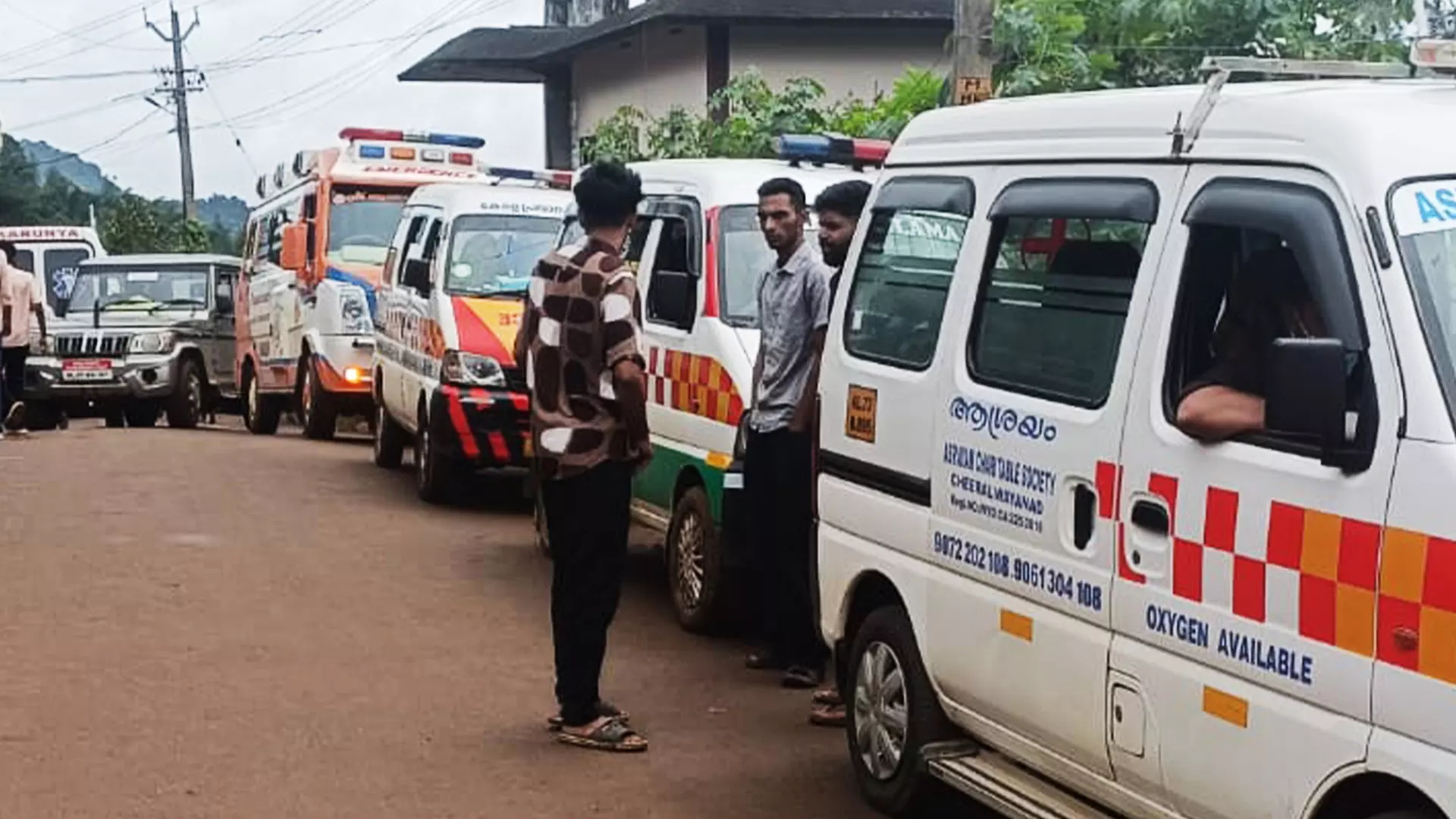
Ambulances of various organisations waiting in a queue in Wayanad.
“We were not alone; all organisations, political or otherwise, came together. When our raft lost control in the river, it was the IUML’s White Guard volunteers who threw us a rope and rescued our comrades,” Shabeer said.
The image of Youth League workers tending to an injured DYFI Youth Brigade comrade became an iconic representation of the volunteering spirit that defined Kerala’s resilience during this devastating period. A video of White Guard workers throwing a rope to the DYFI Youth Brigade's raft went viral on the internet, accompanied by emotional and charged notes praising the brave youth who risked their lives across political lines during the disaster. Political rivals like the CPI(M) and BJP, or SDPI and RSS, who can barely see eye to eye, have been seen working shoulder to shoulder on ground zero.
Kerala model
Trained volunteers, operating like a uniformed force, are another unique aspect that sets Kerala apart from other states. While NCC, or Scouts and Guides, may be active in other parts of the country, the active role of trained volunteer forces such as Kerala Civil Defence, Aapda Mitras, and Emergency Response Force makes Kerala distinct.
Sreelakshmi MS, an Ayurveda therapist; Bindu EJ, a salesperson at a textile shop; and Sajitha M, a homemaker, were part of a Kerala Civil Defence team searching for bodies uphill to Mudakkai with the help of large earth movers known as Hitachis or JCBs. In their late thirties and early forties, the trio were resolute in their voluntary work. Despite having seen enough in a week to last a lifetime, they remained both bold and calm.
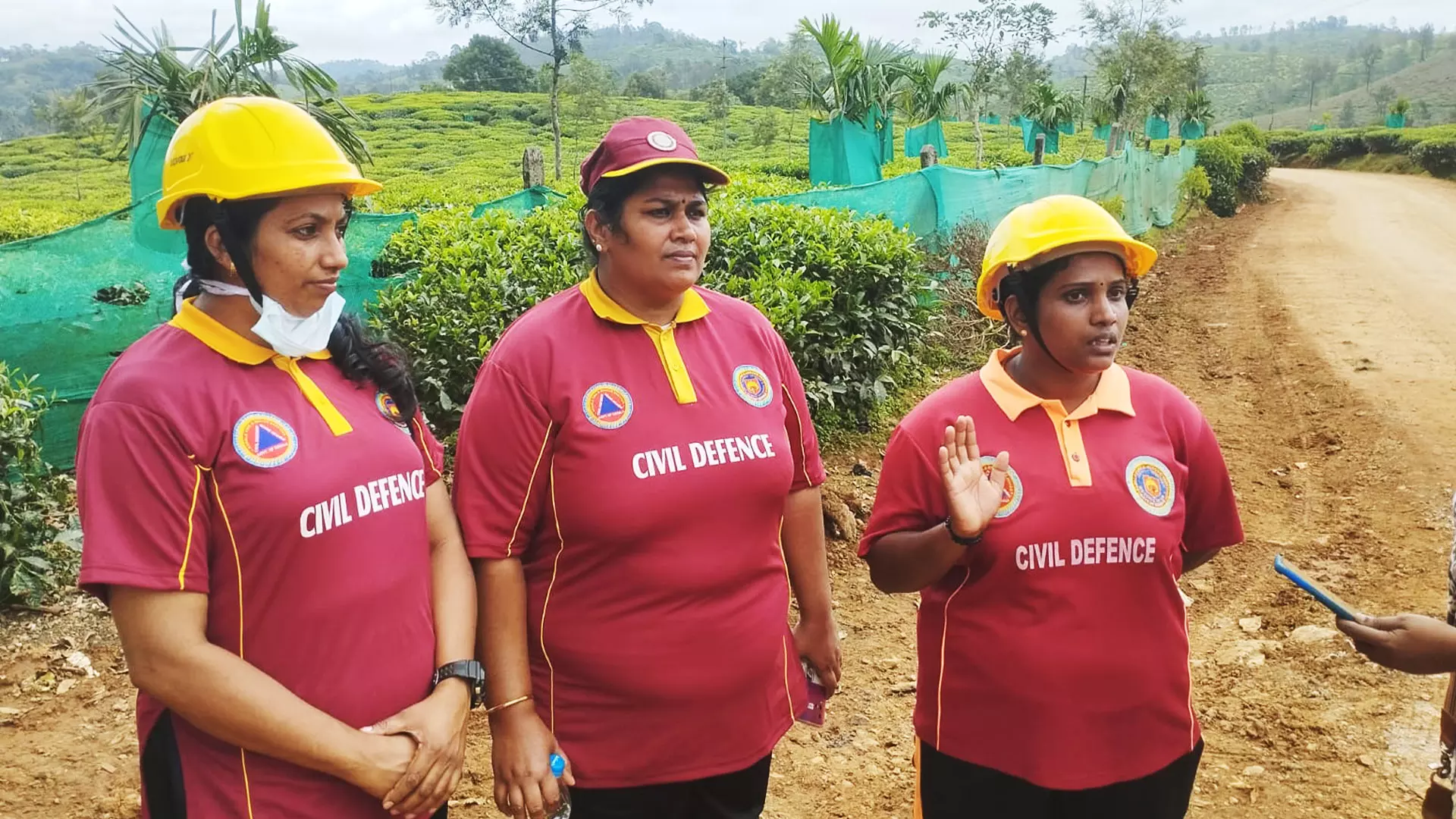
Sreelakshmi MS, an Ayurveda therapist; Bindu EJ, a salesperson at a textile shop; and Sajitha M, a homemaker, were part of a Kerala Civil Defence team searching for bodies uphill to Mudakkai.
“We joined the Kerala Civil Defence team after the 2019 floods, and now we participate in rescue and relief operations whenever needed. Two of us are currently on loss-of-pay leave, but we don't mind. We've received training in fire and water rescue, gas management, and basic trauma care," says Sreelakshmi. "Life has changed significantly since joining this force. Previously, we would rely on our husbands or male relatives for everything, but now we can handle it all ourselves," she adds.
"What we do here is search for the bodies of people who went to sleep on a normal night. This could happen to any of us, and it's important to do this for the safety of everyone. That's what motivated me to get involved," Bindu added.
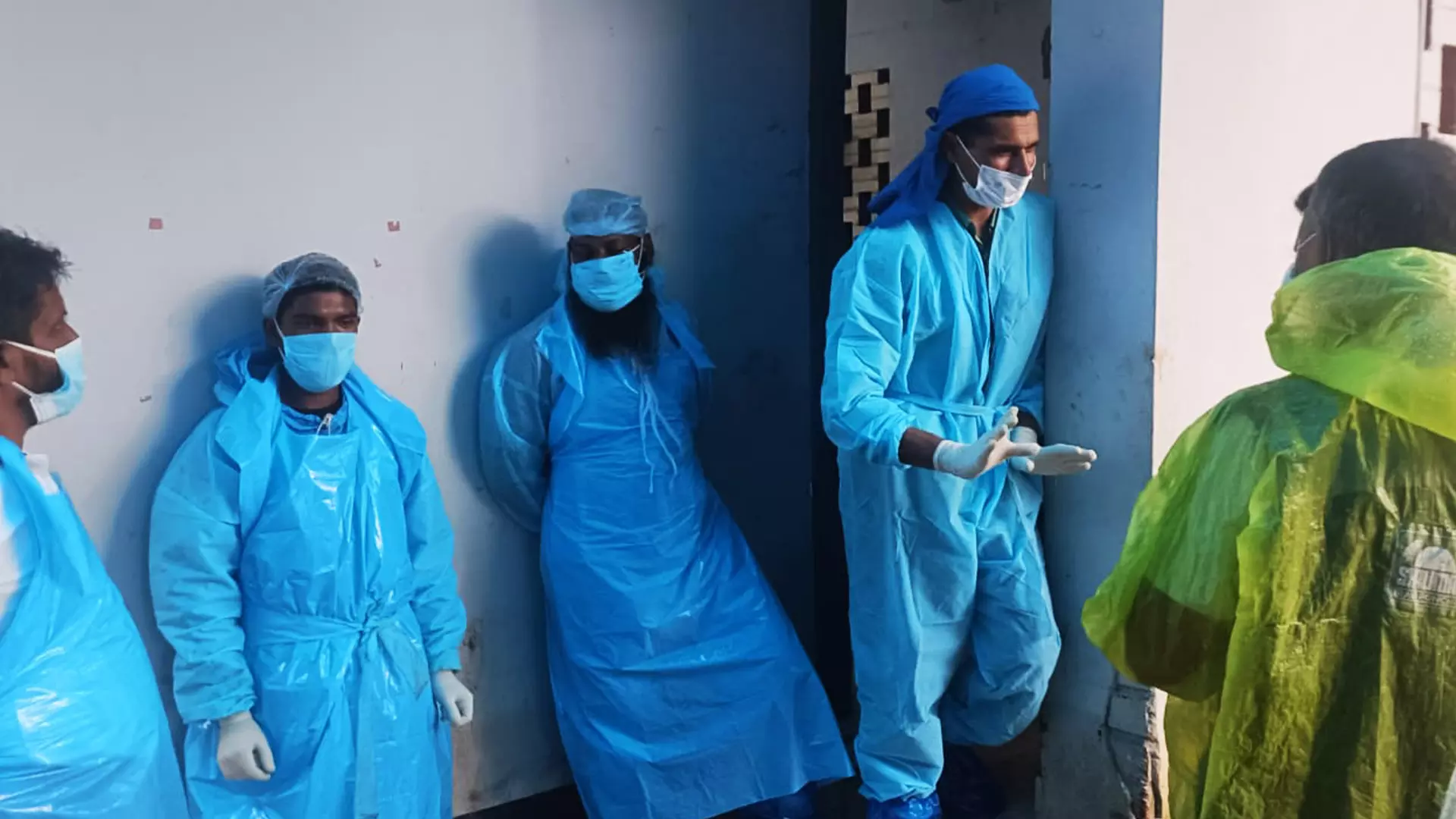
IRW volunteers at work in Wayanad.
The Civil Defence team was formed by the Kerala State Fire and Rescue Department in 2019 to boost disaster response capabilities. This initiative aimed to enhance preparedness and efficiency in dealing with future calamities. This team of volunteers has since become integral to the fire and rescue department’s operations. Clad in uniforms provided by the department, the volunteers have shown remarkable dedication and skill in the rescue efforts. Each day, a new batch of 200 volunteers from various districts takes turns contributing to operation Wayanad, with teams from five districts already showcasing a well-coordinated response to the disaster.
Riding on past lessons
“The volunteer force, Civil Defence, was formed after the 2018 flood. The flood taught us a valuable lesson, as hundreds of youths spontaneously turned up for voluntary activities. In response, civilians were selected in batches and given professional training. Today, we have a strong force of over 10,000 volunteers, working under the ambit of the Fire and Safety Department,” says K Padmakumar, the Director General of Police, Kerala who is in-charge of the fire and rescue department.
The Aapda Mitra team is part of a Union government project on disaster management, run by the National Disaster Management Authority (NDMA). The Kerala chapter based in Kottayam district has 200 volunteers now and the team is active on the ground in Munadakkai and Chooralmala.
Aapda Mitras are highly trained Civil Defence volunteers with insurance coverage and response kits. The KSDMA played a key role in creating this initiative and empowered the Fire and Rescue Services to maintain them, both the Aapda Mitras and Civil Defence, says Dr. Sekhar Kuriakose, the member secretary of the Kerala State Disaster Management Authority.
Aneesh VM from Thiruvananthapuram and Subhash M from Kannur, members of the Bhagat Singh Youth Brigade of the All India Youth Federation (AIYF), were actively on duty at the morgue. Their task involved packing the dead bodies.
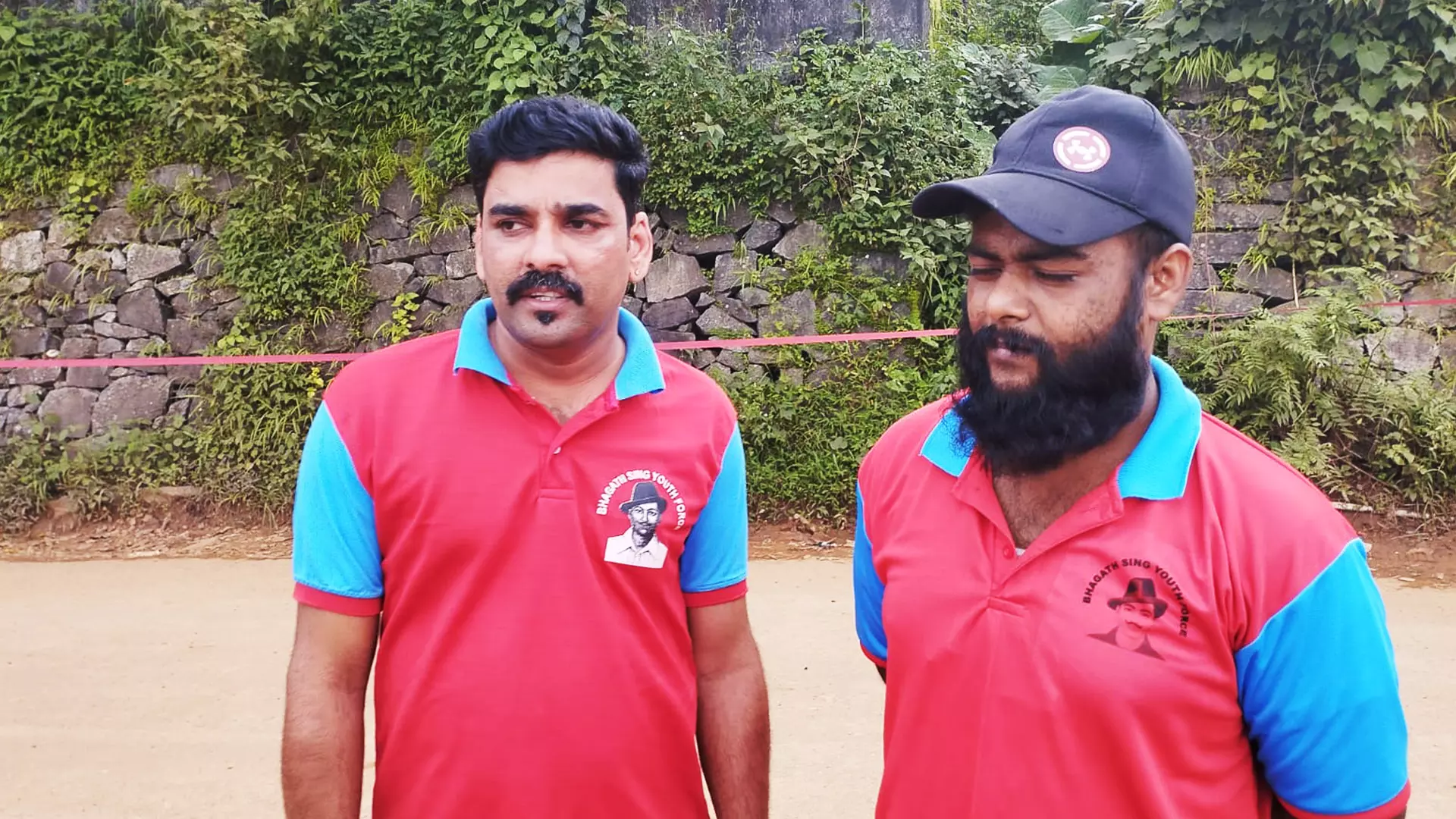
Aneesh VM from Thiruvananthapuram and Subhash M from Kannur, members of the Bhagat Singh Youth Brigade of the All India Youth Federation.
“We were involved in the rescue and relief operations during the Chennai floods of 2015, but something of this magnitude is a first for us. The difference here compared to Tamil Nadu is the active monitoring and participation of the government. We will stay here until the last body is recovered and given a dignified burial,” says Subhash.
“We pack the bodies here. Look, brother, I have never touched such dead bodies in my lifetime. But here, we had to do it because we see the heart-wrenching sight of people outside, rushing to identify their loved ones, sometimes just pieces. The dead have become nothing but flesh and bones—I’m not talking about chicken or beef, but real human bodies. It's unimaginable,” says Aneesh.
White Guards, the voluntary force associated with the Indian Union Muslim League, from Narippatta came the next day with full preparation to run a mess to provide food for the rescuers and others on the ground.
“We have been voluntarily working like this for the last six years, starting after the 2018 floods. We are a team guided by the Muslim Youth League. We don't engage in fund collection for this; instead, we raise funds among ourselves, and sometimes, like-minded people sponsor a day's expense. We have been serving food for around 10,000 people a day,” said the White Guard volunteers. The White Guards served food at the rescue operation sites for six days until the district administration took over food preparation and delivery, citing food safety concerns. Their volunteers were active in other search, rescue and relief operations too.
Sunni Yuvajana Sangham (SYS) workers from all over north Kerala were at the rescue site, assisting the police, army, and fire and rescue operators. When we met the SYS Santhwanam (meaning "solace") team, they were engaged in search operations for people trapped under the rubble.
“We are a team of 28 volunteers from Kasargod district, and we've been here since day one. We've assisted the authorities in finding people buried under the debris. Yesterday, we found about 40 grams of gold in a house, which we promptly handed over to the owner,” said Siddique from Kasargod. “This could happen to anyone. If it were us, someone else would do what we're doing now.”
Youth Congress, under the banner of Youth Care in Wayanad, is running a collection centre to mobilise essentials for those affected by the landslides. They have hundreds of volunteers all over the area, extending helping hands to the authorities.
“From the moment the unparalleled disaster struck Wayanad until now, we have been here with our fellow workers. Based on that, I can say that there is no difference between DYFI, Youth Congress, or Youth League here; we stand together on this ground, as of now,” says Rahul Mankoottathil, the state president of Youth Congress.
Ideal Relief Wing, a registered NGO, and Team Welfare are groups volunteering to provide a range of services, including cleaning bodies, offering medical aid, and providing psychological counselling for those in need.
“We treat the remains with the deepest respect, as if they were our own family members. The heartbreaking condition of many of these bodies is so severe that it's too much for others to assist the police during the inquest. That's why we stepped in to handle this challenging task, as our training with our organisation has prepared us for these difficult situations," says Haseena V of IRW.
Seva Bharati, an RSS affiliated charity organisation, and SDPI's volunteers are also active on the ground. While Seva Bharati is offering ambulance services and burial services, SDPI volunteers are assisting the search and rescue forces in their efforts.
The work done by the voluntary medical team sent by local private hospitals was also commendable. Dr Lovena Mohammed, a young trauma surgeon from WIMS Medical College, Wayanad, played a crucial role. Despite her fear of heights and having never used a zip line before, she crossed a river via zip line to rescue critically injured individuals from the rubble.
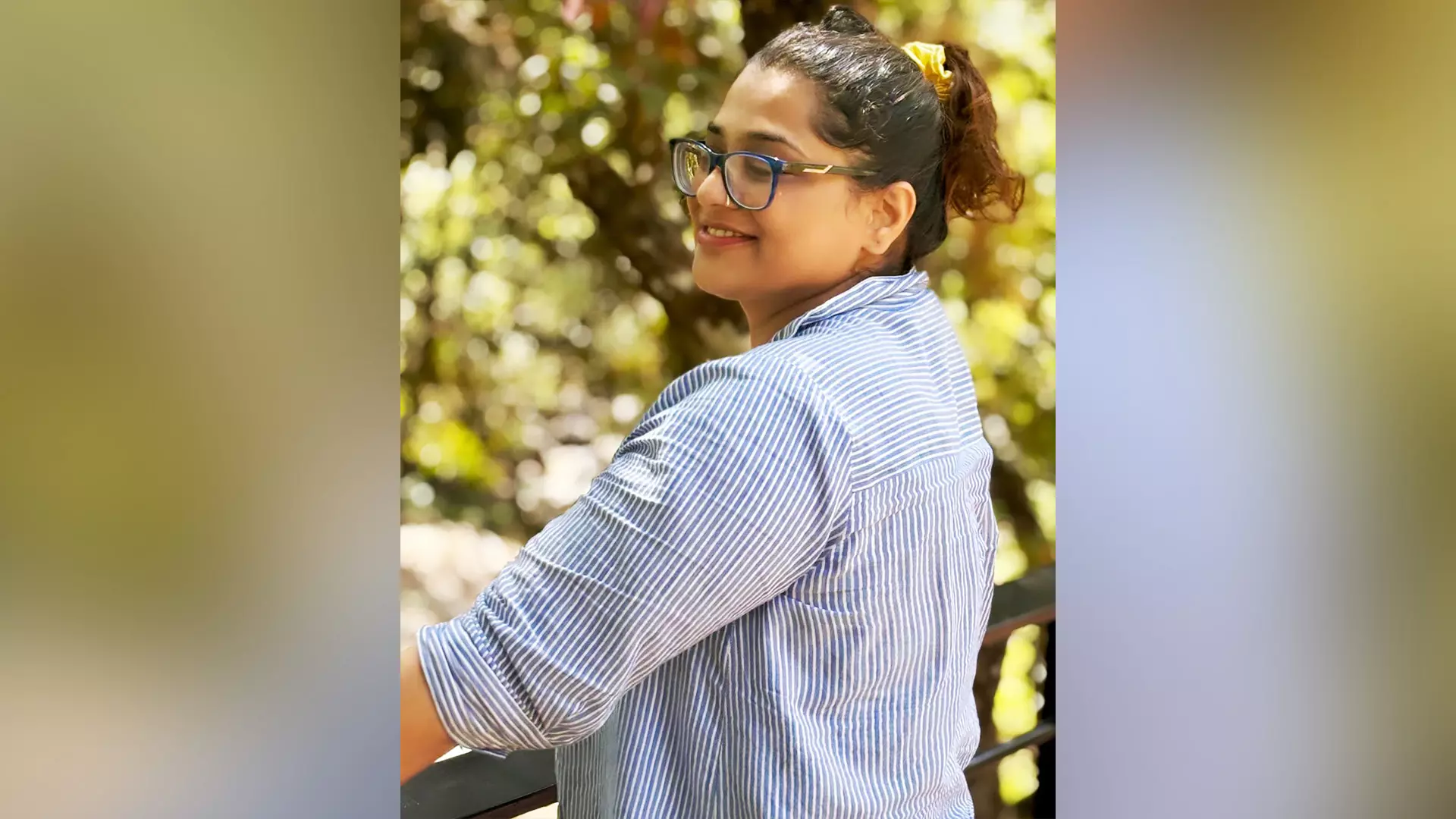
Dr Lovena Mohammed overcame her fear of heights and reached out to people using zip lines. Photos: On arrangement
“The bridge had collapsed and the alternate one was yet to be built. I am someone who is scared of heights and had never ridden a zip line before. But given the situation and my professional duty, I took up the challenge, and it paid off. I was able to treat many injured people,” said Dr Lovena Mohammed.
“The voluntary force and their network in Kerala are truly commendable. We received immense help from them. I've been part of several disaster control operations across the country, but I have never seen a dedicated force of civilian volunteers like this anywhere else. Their attitude and dedication were striking; they operated like a single unit under a clear chain of command. It was amazing to see how civilian units could work so cohesively. Despite being from different organisations—some religious, some political—they set aside their differences for the rescue work. I've witnessed Muslim and Hindu groups working side by side, which is remarkable. For instance, Hindu priests eating in a mosque would be unthinkable elsewhere, yet I saw mosques feeding Hindu priests and temple societies, and even RSS-backed organisations distributing amenities at a madrasa. It was incredible,” says an army commissioned officer who was part of the contingent that built the Bailey Bridge in Chooralmala.
Kerala’s history of service
Kerala's history of voluntary work highlights the state's deep-rooted tradition of community-based organisations and self-help groups, which have significantly contributed to its social and economic development. From the library movement to the people's science movement led by Kerala Sastra Sahitya Parishad, and from the literacy project to people's planning, all were based on this concept of volunteerism. Kudumbashree, a community-based self-help group and poverty reduction program implemented by the State Poverty Eradication Mission (SPEM) of the Government of Kerala, is also an extension of this concept.
In response to the COVID-19 pandemic, Kerala formed a 236,000-strong Community Volunteer Force in 2020. This initiative aimed to bolster local self-governing bodies during the crisis. The force comprised volunteers aged 22 to 40, who underwent local training and received official identification cards.
From floods to the pandemic, disasters have significantly contributed to reviving Kerala society's sense of community, prompting people to believe in togetherness.
